

What is poly-L-lactic acid filler?
Poly-L-lactic acid filler is a sterile, injectable, biocompatible, biodegradable material that is made of small particles of a synthetic polymer named ‘poly-L-lactic acid’ (PLLA), carboxymethylcellulose (USP), non-pyrogenic mannitol (USP) and sterile water for injection (USP) (Galderma Laboratories, L.P.). PLLA works gradually to help restore the skin's inner structure for a more youthful-looking appearance. When injected into the face, PLLA stimulates the skin's natural collagen production response, providing long-lasting soft tissue correction of soft tissue defects (Munia et al, 2023), smoothing facial wrinkles and improving skin firmness and elasticity.
PLLA is the only FDA-approved facial injectable treatment that helps stimulate the skin's natural collagen production. It has been used worldwide since 1999 (Christen, 2022).
Collagen and visual skin ageing
Skin ageing is marked by structural and functional changes in the epidermis and dermis, which result clinically in wrinkles, loss of elasticity, and rough-textured appearance (Cabral, 2020). Collagen is a fibrous protein that acts as the skin's support structure and helps maintain the skin's shape. Collagen production declines naturally throughout the ageing process (Quan, 2013). By age 40, the average person faces up to 25% loss of their natural collagen (Bergeret-Galley, 2004). 70% of our skin is composed of collagen (Ackerman, 2005), and collagen loss causes the skin to lose its elasticity and moisture (Fitzgerald et al, 2018), resulting in signs of ageing such as fine lines, wrinkles and sagging (Choi et al, 2019).
PLLA as a treatment option: benefits, aftercare and downtime
With age, we see a significant loss of facial volume due to fat and bone resorption, coupled with a reduction in collagen loss and production, leading to changes in skin quality, tone, and texture (Munia et al, 2023). PLLA stimulates natural collagen production, working deep within the skin to help restore its inner structure. Three months after treatment, patients treated with PLLA showed a 66.5% increase in Type 1 collagen production (Goldberg, 2013).
PLLA helps to subtly and gradually add volume that lifts the soft tissues and plumps the skin. Benefits of treatment include the correction of shallow to deep facial wrinkles and folds, including nasolabial folds, marionette lines, pre-auricular wrinkles, radial cheek folds and chin wrinkles (Galderma Laboratories, 2016).
A study evaluating the efficacy and safety of PLLA compared to hyaluronic acid (HA) demonstrated that PLLA can achieve comparable results to HA for the correction of nasolabial folds (Hyun et al, 2015).
Optimal results with minimal risk of adverse events, including nodule formation, derive from good injection technique, avoiding superficial placement of product, sufficient volume and reconstitution, and pivotal post-procedure care and patient education (Rendon, 2012).
A retrospective chart review of 4483 treatments of PLLA performed in 1002 patients demonstrated a low incidence rate of adverse events: 3.6%, all mild in nature, with PLLA diluted to an 8-10ml final volume. The most commonly reported events were bruising and ecchymosis (Palm et al, 2021).
» When injected into the face, PLLA stimulates the skin's natural collagen production response, providing long-lasting soft tissue correction of soft tissue defects (Munia et al, 2023), smoothing facial wrinkles and improving skin firmness and elasticity «
The safety profile of PLLA has significantly improved due to the higher reconstitution volume, the average being 7mL (Lorenc et al, 2016) compared to 3-5 mL utilised in earlier years, as demonstrated in a large observational study of 4000 HIV patients treated with PLLA for lipoatrophy which reported an incident rate of nodules as 5.7% (Duracinsky et al, 2014).
Side effects reported include redness, bruising, mild pain, swelling and slight bleeding. Nodules (small bumps under the skin) can sometimes be noticeable when pressing on the treated area. Patient aftercare is essential for the best possible treatment results and to reduce complications. To distribute the product evenly, avoid the formation of nodules and optimise results, the 5-5-5 rule is recommended: massage the injected area for five minutes, five times a day, for five days in a row (Fabi et al, 2023).
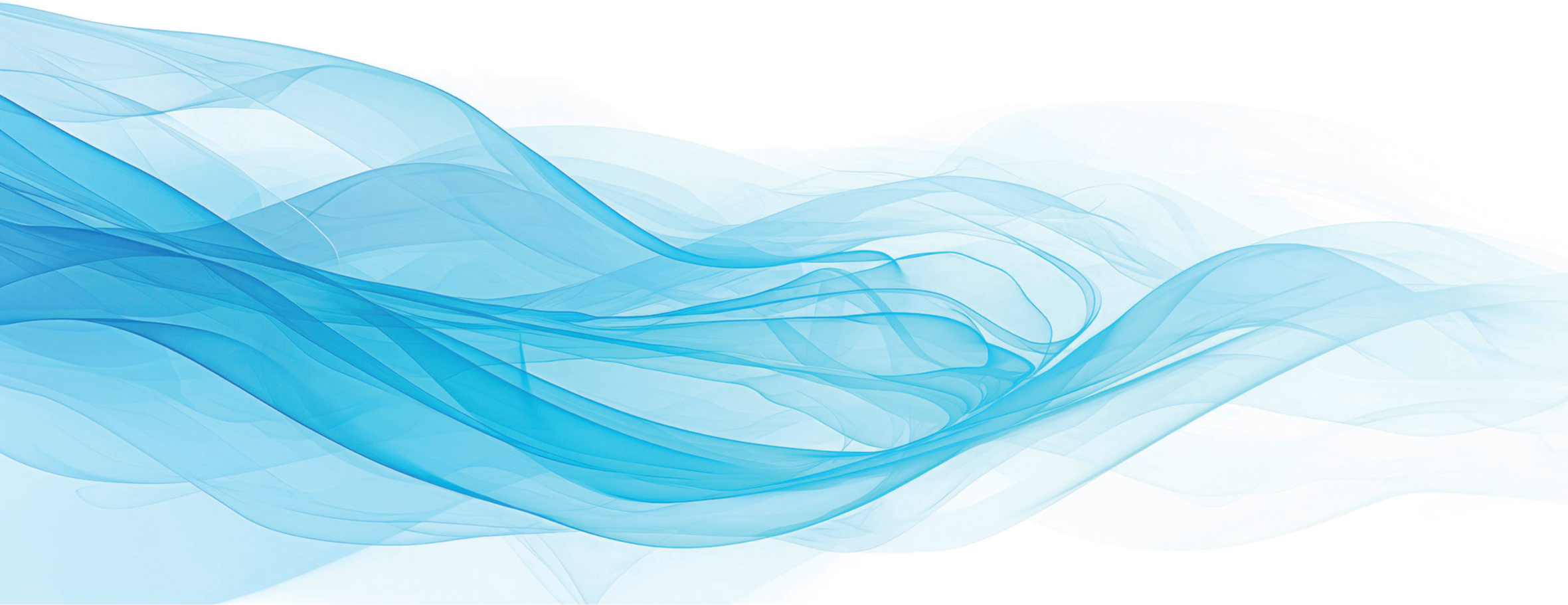

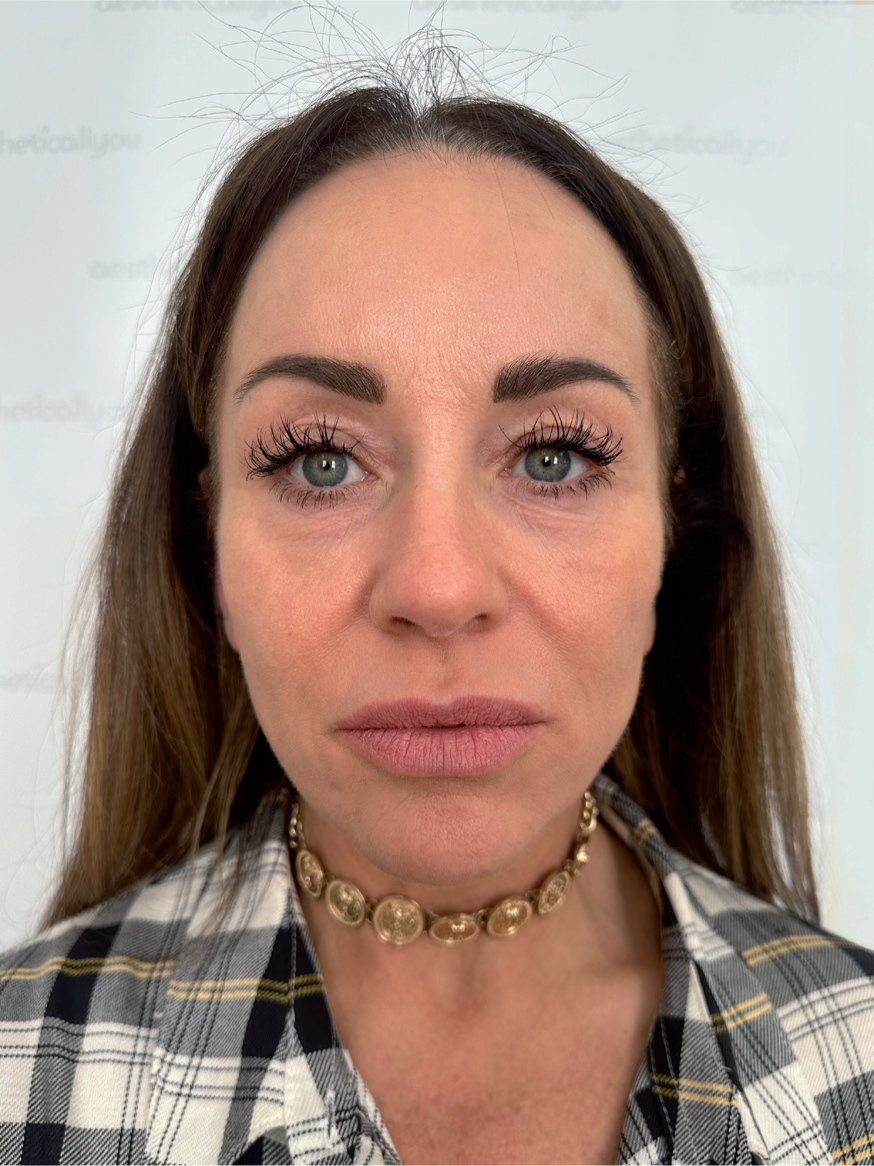
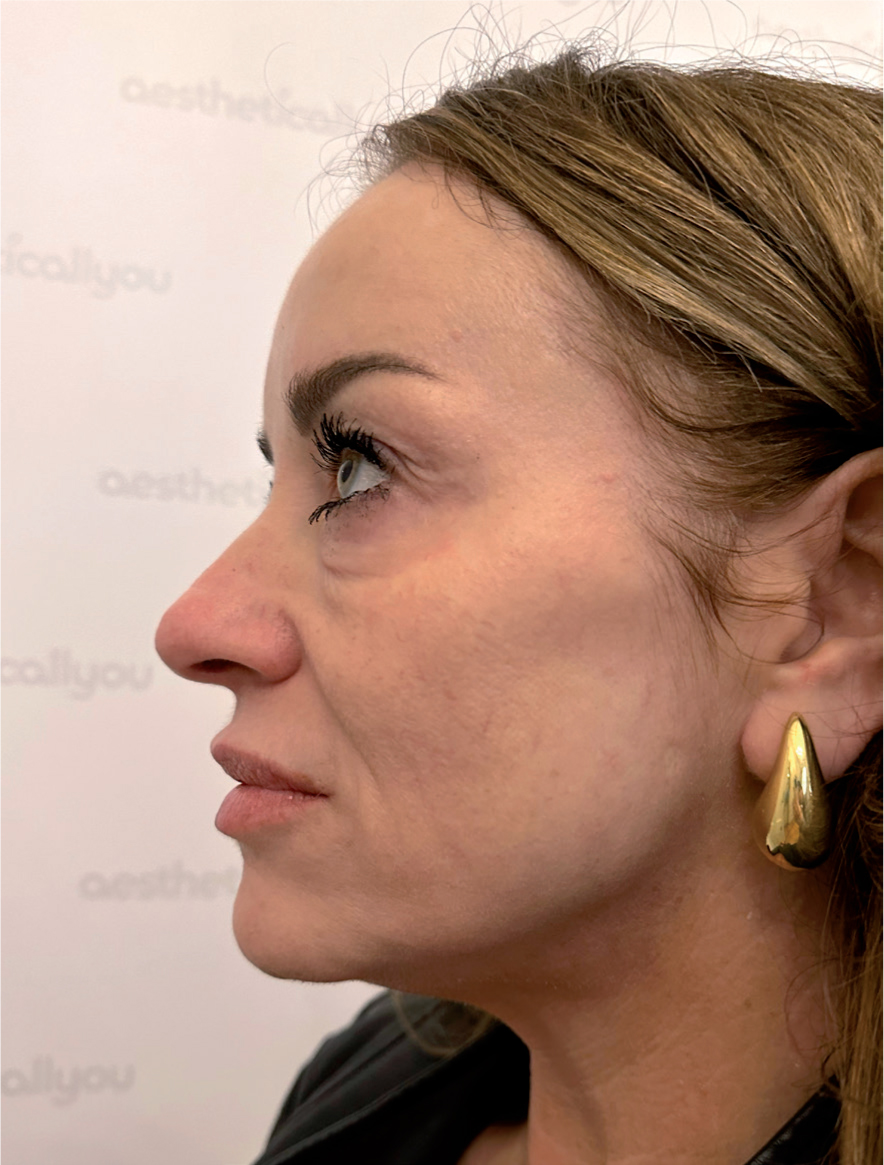

In general, two to three sessions of PLLA are recommended depending on the areas to be treated, volume loss, skin laxity and ageing of the patient in order to reach the desired outcome (Haddad et al, 2019).
Longevity and patient satisfaction
Clinicians can expect long-lasting results, with patients seeing positive effects over two years post-treatment (Galderma Laboratories, 2016; Palm and Goldman, 2009), making this a good treatment option for those looking for minimal upkeep.
A 2023 study exploring the efficacy and safety of PLLA for the correction of cheek wrinkles demonstrated high patient satisfaction regarding skin sagging, firmness, radiance, natural-looking results, and a desire to repeat treatment and recommend it to others (Fabi et al, 2023).
Who might choose PLLA as a treatment option?
A rise in patients opting for more natural-looking aesthetic results and natural facial movement has led many clinicians to carefully consider appropriate products when it comes to treatment. At my clinic, especially with injectable treatments, I prefer a conservative approach to consistently achieve effective, natural-looking results for my patients and avoid the risk of perception drift. Perception drift occurs when a patient's perceptions of the changes achieved after a series of cosmetic procedures become skewed (Sola and Fabi, 2019). Practitioners should be aware of the benefits of choosing a ‘less is more’ approach and avoid the risks of potential overfilling or facial distortion.
Case study: patient 1
A 48-year-old female patient presented seeking to improve her facial flaccidity and what she described as ‘a tired look’ resulting from extreme weight loss and exercise over a short period of time. On examination, moderate facial ptosis was evident, with a descent of the cutaneous tissues, volume loss to the mid-face, visible nasolabial grooves, sagging to the jawline - emphasising a weary expression, and a worsening of her facial contour.
The facial examination used manual traction posteriorly to the area to be treated and demonstrated considerable tissue mobilisation. Treatment included a vector technique adapted to reduce sagging and improve the tired expression, utilising Sculptra in three sessions at six weekly intervals.
PLLA injection technique
PLLA was injected in the posterior temporal region, 5ml in total, using a 22G x 50 mm micro fine cannula carefully placed parallel to the skin and manoeuvred to reach the subcutaneous plane with its direction towards the superior temporal area. Three injection points were administered through one entry point: 2ml in the upper region, 1.5ml medium, and 1.5ml in the lower points. This technique covered the entire area of the lateral temporal-malar pad.
The mid and lower face were treated using a 25G x 50mm micro fine cannula, targeting the mandibular, preauricular and malar areas, 0.1-0.2ml per cm2 was administered with a retrograde fanning technique carefully placed in the superficial subcutaneous plane. Two entry points were used, with 5 ml per facial side administered, starting from the mandibular angle, then targeting and manoeuvring to the zygomatic arch, preauricular and malar areas. PLLA injected into these regions causes neocollagenesis, providing support to the superficial musculoaponeurotic system (SMAS) in addition to lifting and pulling up the skin, thus reducing the sagging of the face.
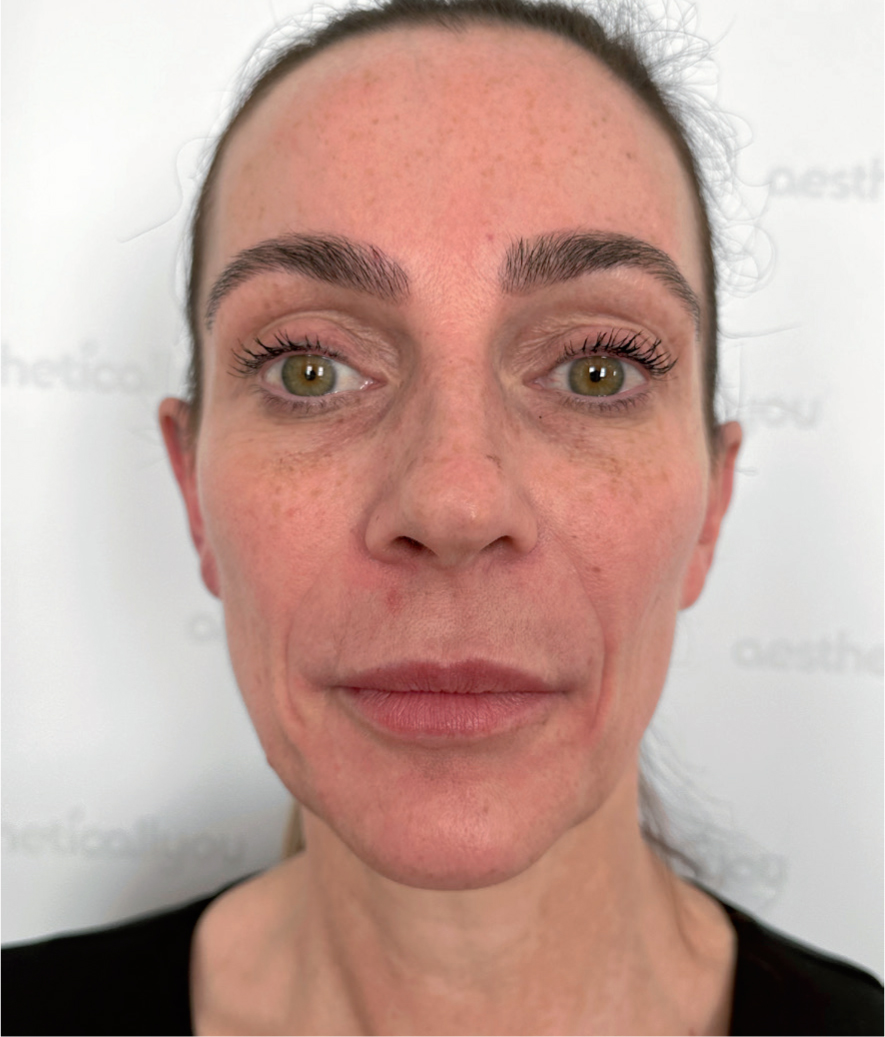
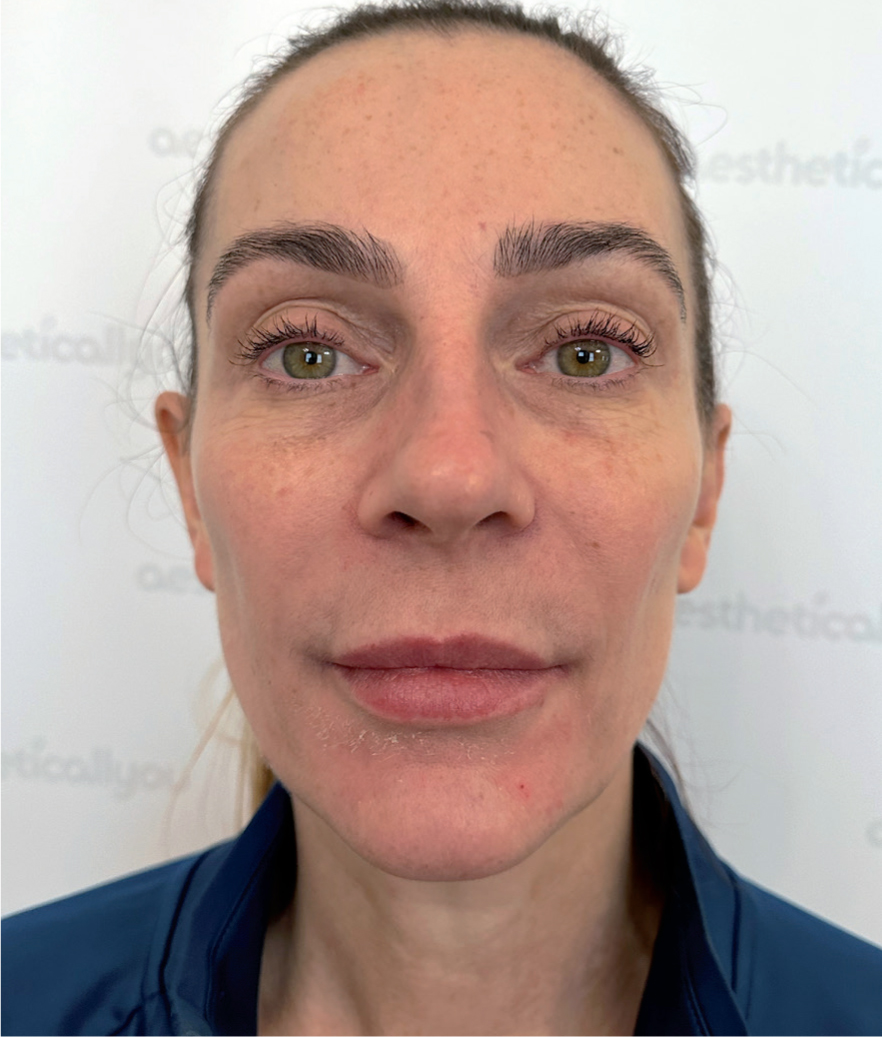


12 weeks after the third session of PLLA, a considerable reduction in the periorbital groove was visible. There was also a noteworthy improvement to the eye bags, nasolabial groove, and repositioning of the lateral zygomatic and malar regions, resulting in improved facial volume. The lower third of the face demonstrates a significant improvement to the jowl area, which positively impacts her facial contour.
Case study: patient 2
A 46-year-old female presented with concerns about wrinkles when smiling, a deepening to her nasolabial folds, volume loss in the midface and mild sagging to her lower face. On examination, accordion lines were evident when smiling, with mild flaccidity to the mid and lower face and a moderate nasolabial groove. The patient described a ‘tired and ageing appearance’ and wanted a natural softening effect on her concerned area with an overall rejuvenated appearance.
PLLA injection technique
PLLA was injected in the posterior temporal region, 5ml to target the mid and lower face, and treated using a 25G x 50mm micro fine cannula. Targeting the zygomatic arch, mandibular, preauricular and malar areas, 0.1-0.2ml per cm2 was administered with a retrograde fanning technique placed in the superficial subcutaneous plane and not too superficial to avoid nodule formation. A total of 5 ml per facial side was administered.
Two sessions of PLLA were utilised, and 12 weeks after the second session, we observed a significant improvement in accordion lines when smiling, a corrected nasolabial groove, and an improvement to the lateral and malar zygomatic regions, resulting in an overall improved appearance of the mid-and lower face volume.
In both patients, the posterior temporal region was chosen to be treated with PLLA due to the vectorial support it would provide to the facial structures. Various studies have demonstrated that temple lifting and volume can yield a full-face effect via a subdermal injection technique, which induces aesthetic effects beyond the temple and into the lower face (Casabona et al, 2020; Suwanchinda et al, 2018).
Conclusion
Strategically placed PLLA that considers the action vectors of the facial ligaments can have superior results. Utilising this approach requires fewer products and treatments, resulting in a reduced risk for the patient. It can also yield longevity for patient outcomes, increasing patient satisfaction. Clinicians can be assured that PLLA's long safety history and its ability to produce significant, subtle, natural results make it an attractive, versatile tool to employ for patients seeking volume augmentation and the ‘undetectable approach’ to facial rejuvenation.



